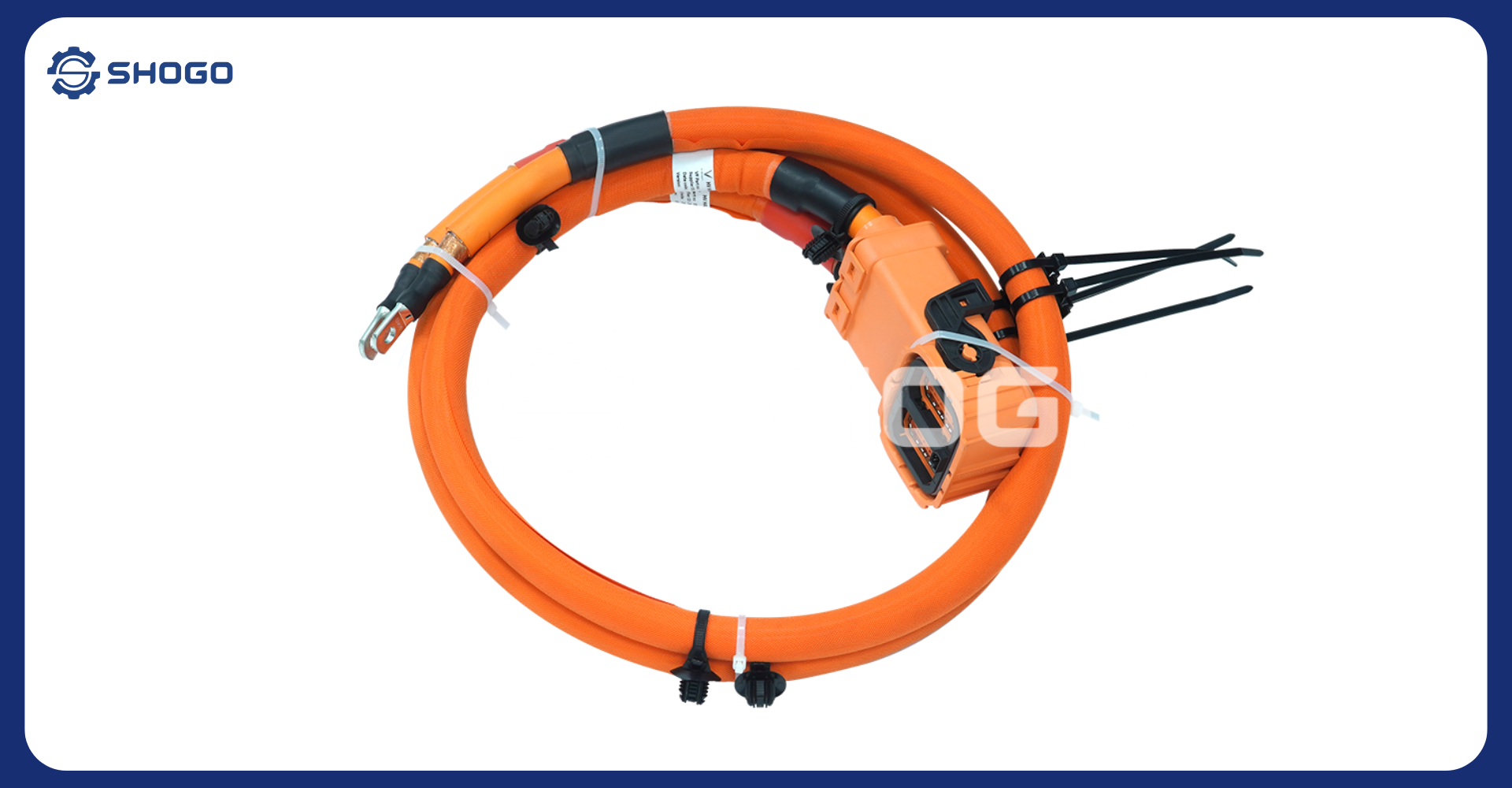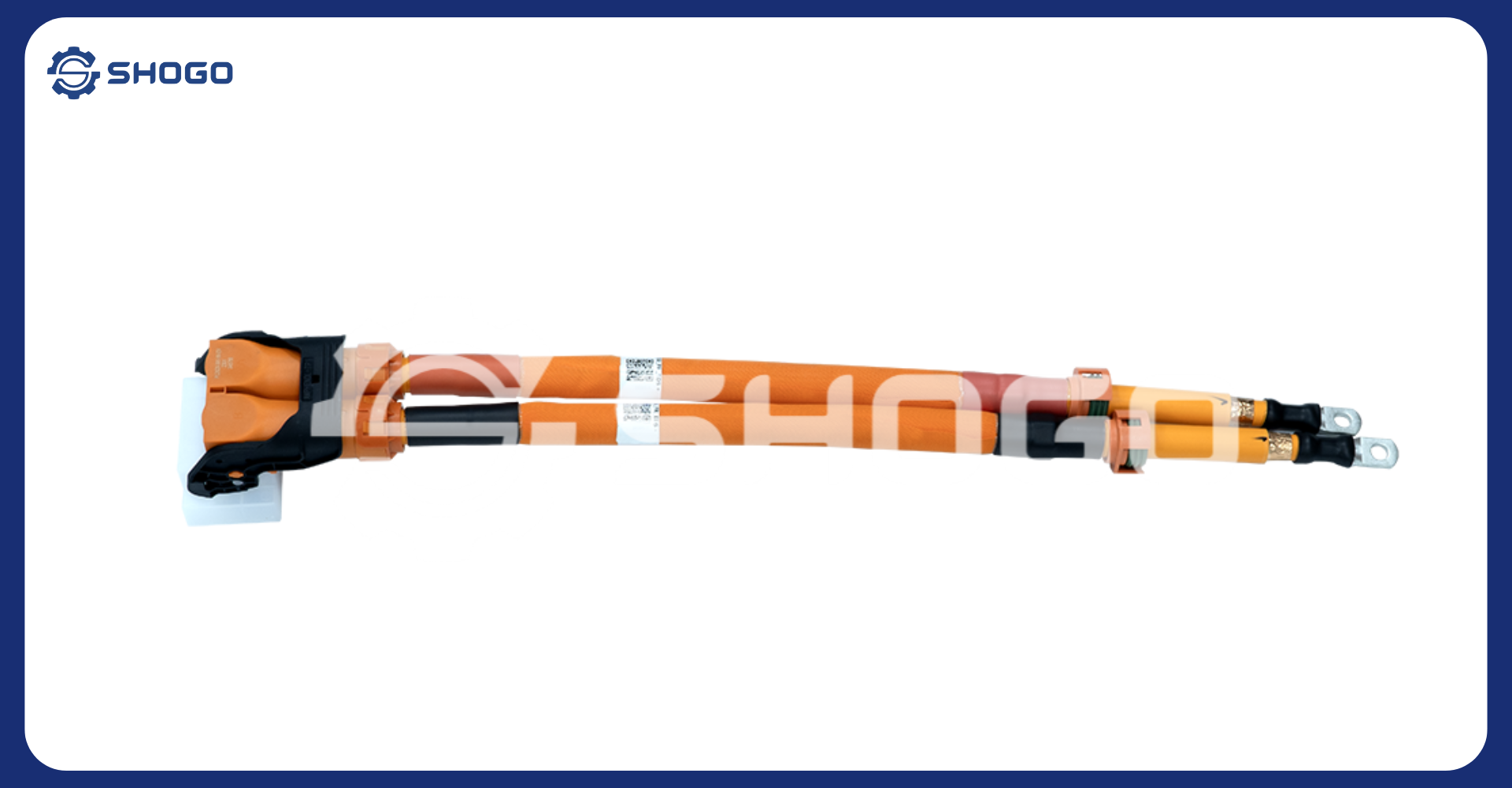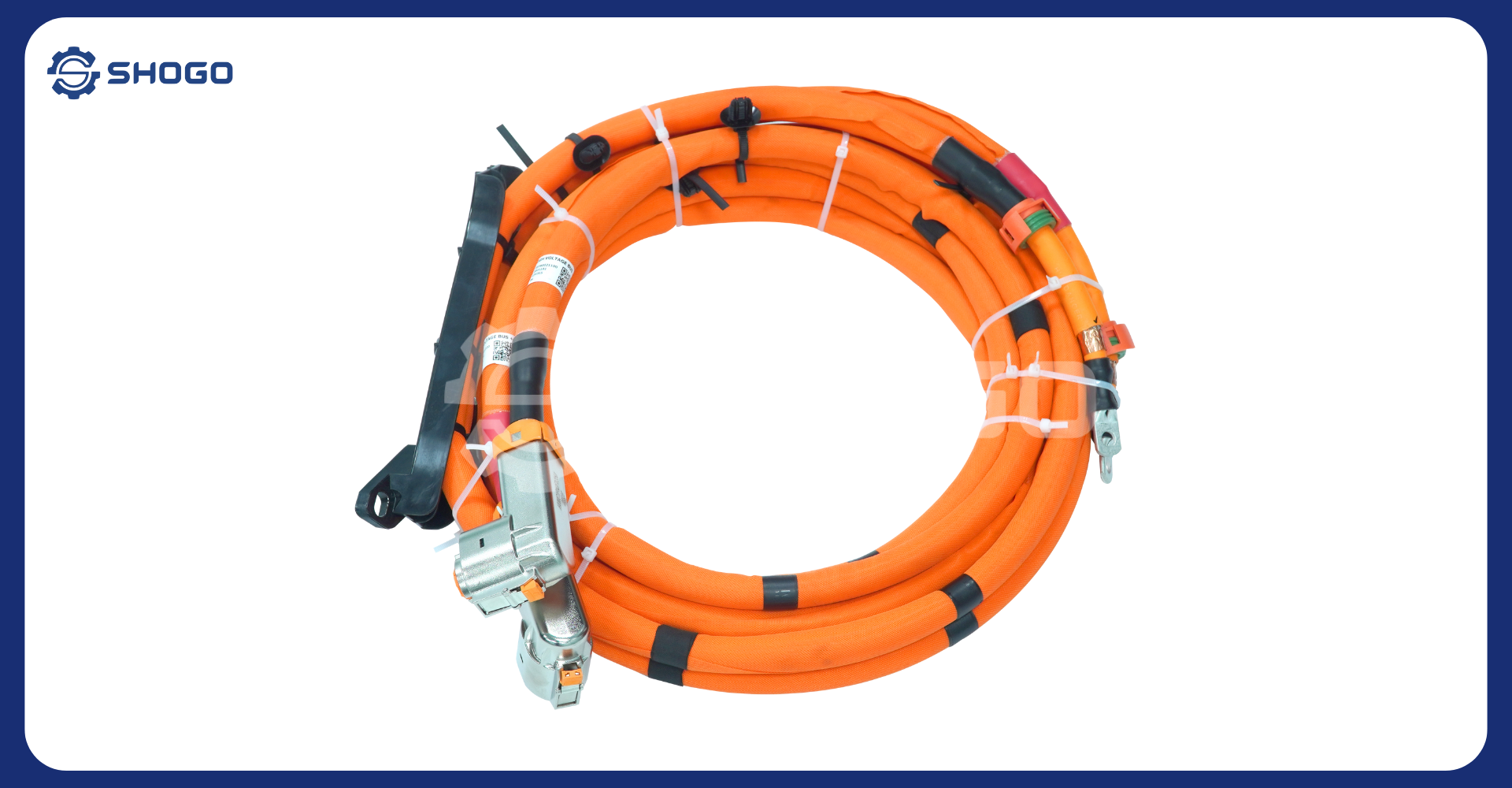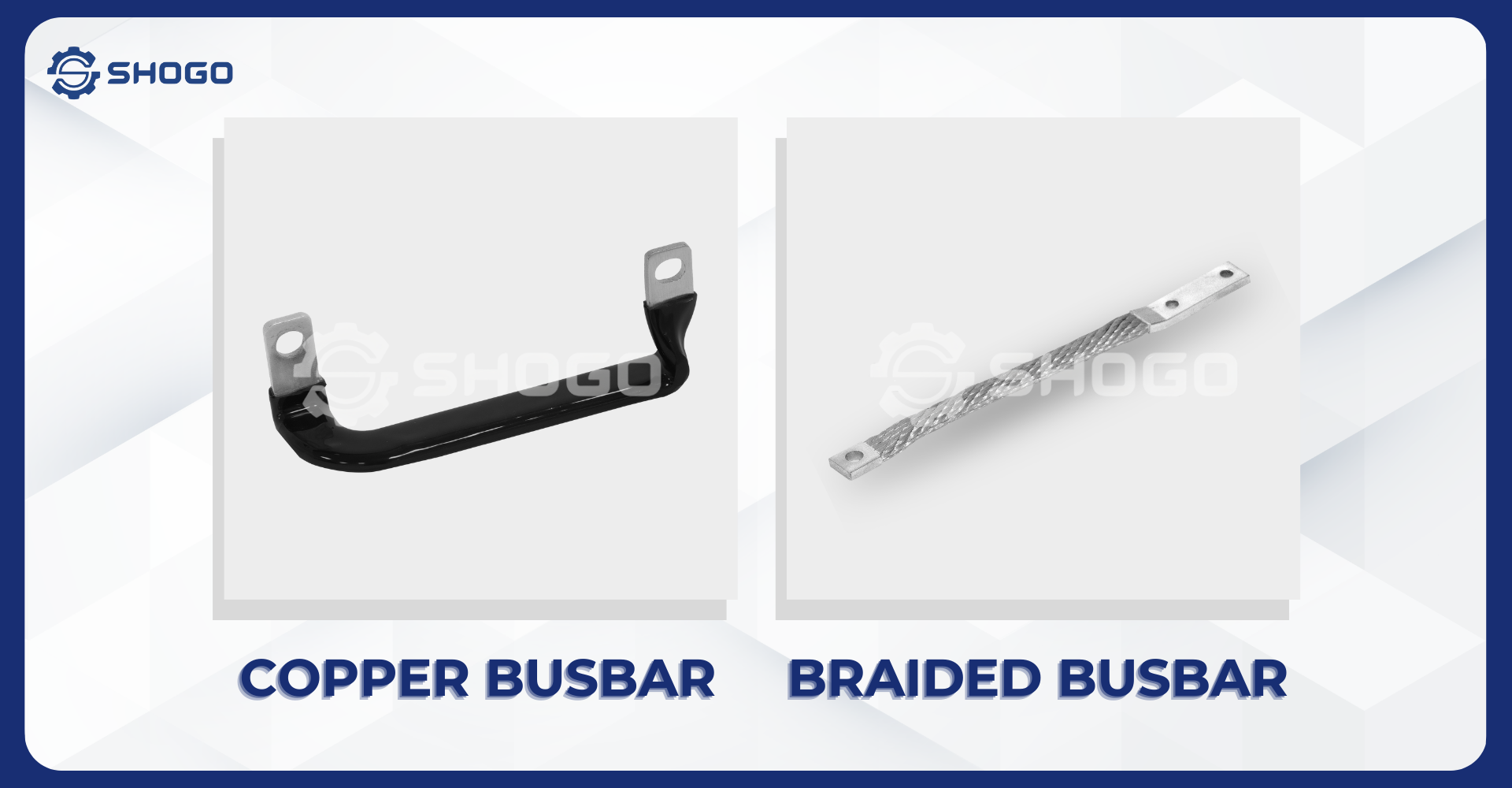
Bus bars play an essential role in the electrical system, responsible for conducting and distributing electricity from the source to consuming devices. However, with many different options on the market, choosing the right type of busbar can be confusing. This article will comprehensively compare Copper Bus bars and Braided Copper Bus bars in detail, helping you make informed decisions for your electrical system.
1. Concept and structure:
1.1. Copper busbars
- Made from pure copper, in the form of a hard bar with diverse cross-sections (rectangular, square, flat,…).
- Dimensions and shapes are manufactured according to standards, in accordance with specific technical requirements.
- The busbar surface is often plated with tin or nickel to increase oxidation resistance and improve electrical conductivity.
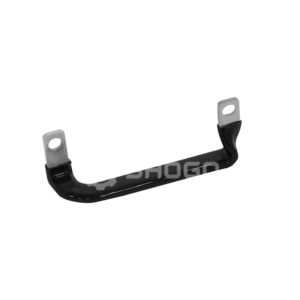
Copper Busbar
1.2. Braided copper busbars
- Made by braiding many small copper strands together, providing high flexibility.
- The number of copper strands, thickness and braiding method can vary depending on the requirements for conductivity and load-carrying capacity.
- Braided copper busbars are often covered with PVC or XLPE to ensure safety and increase aesthetics.
2. Advantages and disadvantages
| Feature | Copper Busbar | Braided Copper Busbar |
| Construction | Rigid bar | Flexible, bendable |
| Conductivity | Superior | Relatively good |
| Power Loss | Low | Higher |
| Current Carrying Capacity | High | Lower |
| Cost | Higher | Lower |
| Installation | Easier | More complex |
| Applications | Industrial power systems, factories, substations, etc. | Areas requiring high flexibility, compact switchgear, etc. |
| Advantages | High conductivity, low power loss, high current carrying capacity, easy installation and maintenance. | High flexibility, lower cost, suitable for compact switchgear. |
| Disadvantages | Higher cost, difficult to bend. | Lower conductivity, higher power loss, lower current carrying capacity, more complex installation. |
3. Compare details
3.1. Electrical conductivity:
- Copper busbars have better electrical conductivity due to their larger conductive cross-section and fewer contact points. The current density on the copper busbar is lower, leading to reduced power loss and increased transmission efficiency.
- Braided copper busbars have many contact points between copper strands, leading to higher power loss due to Foucault current phenomenon. The current density on the braided copper busbar is higher, which can lead to overheating and risk of fire.
3.2. Power loss:
- Copper busbars have lower power loss due to better electrical conductivity.
- Braided copper busbars have higher power loss due to multiple contact points between copper strands.
3.3. Load capacity:
- Copper busbars have a higher load-carrying capacity due to their larger conductive cross-section and sturdy structure.
- Braided copper busbars have lower load carrying capacity due to their smaller conductive cross section and flexible structure.
3.4. Price:
- Copper busbars cost more because more pure copper is used.
- Braided copper busbars cost less because less pure copper is used.
3.5. Installation:
- Copper bus bars are easier to install because they are rigid and can be fixed with brackets.
- Braided copper busbars are more complicated to install because they need to be bent and fixed to the desired shape.
3.6. Application:
Copper bus bars:
- Commonly used in industrial electrical systems, factories, transformer stations,… where high conductivity, low power loss and large load capacity are needed.
Braided copper busbars:
- Used in cases where high flexibility and compact electrical cabinets are needed, for example:
- Control cabinet
- Household electrical cabinet
- Solar power system
- Building electrical system
- Areas with limited space
4. Factors to consider when choosing:
Electrical conductivity: It is necessary to determine the level of current that needs to be transmitted to select the type of busbar with the appropriate cross-section.
- Power loss level: It is necessary to consider the allowable power loss level in the electrical system.
- Load capacity: It is necessary to determine the maximum load that the electrical system needs to withstand.
- Cost: Consider the investment budget for the electrical system.
- Size and shape: Choose the busbar size and shape appropriate to the installation space.
- Environmental conditions: Determine the installation environmental conditions (temperature, humidity,…) to choose the appropriate busbar type.
- Aesthetic requirements: Choose a type of busbar with a design that matches the aesthetic requirements of the electrical system.
5. Note when using:
- It is necessary to comply with technical standards in the selection, installation and operation of busbars.
- Use appropriate protective devices to ensure the safety of the electrical system.
- Regularly inspect and maintain busbars to ensure efficient and safe operation.
6. Conclude:
Choosing between Copper busbars and Braided copper busbars depends on the specific needs and requirements of the electrical system. Careful consideration of the above factors will help you make wise decisions, ensuring the electrical system operates efficiently, safely and economically.
Why choose SHOGO Viet Nam?
1. Quality Commitment: SHOGO Viet Nam.,JSC is the No. 1 Busbar and Cable manufacturer in Viet Nam for the new energy industry. We are committed to providing our customers with products of the highest quality standards. All raw materials are inspected for quality before production, and 100% of products are thoroughly inspected before delivery. SHOGO Viet Nam holds prestigious certificates: IATF16949-2016, ISO 9001-2015, ISO 14001-2015, ISO/IEC 17025-2017,…
2. Competitive Pricing: With a team of experienced engineers who have participated in many electric vehicle production projects, SHOGO Viet Nam can provide product consulting to help customers optimize production costs and improve product quality. With a geographical location that is convenient for trading, along with modern machinery and technology, SHOGO Viet Nam can provide products at the most competitive prices on the market.
3. Dedicated Service: With a team of experienced employees, large production capacity and reasonable supply, SHOGO Viet Nam always ensures on-time delivery for customers. Support customers in all projects, quickly handle arising problems.
You can refer to some of our Busbar products on the page “PRODUCTS“.
To receive FREE CONSULTATION on our products, Busbar design and manufacturing services, please CONTACT
Email: info@shogovn.com / info@shogobusbar.com
Whatsapp / Wechat / Zalo : +84 989538022/ +84 393929885
